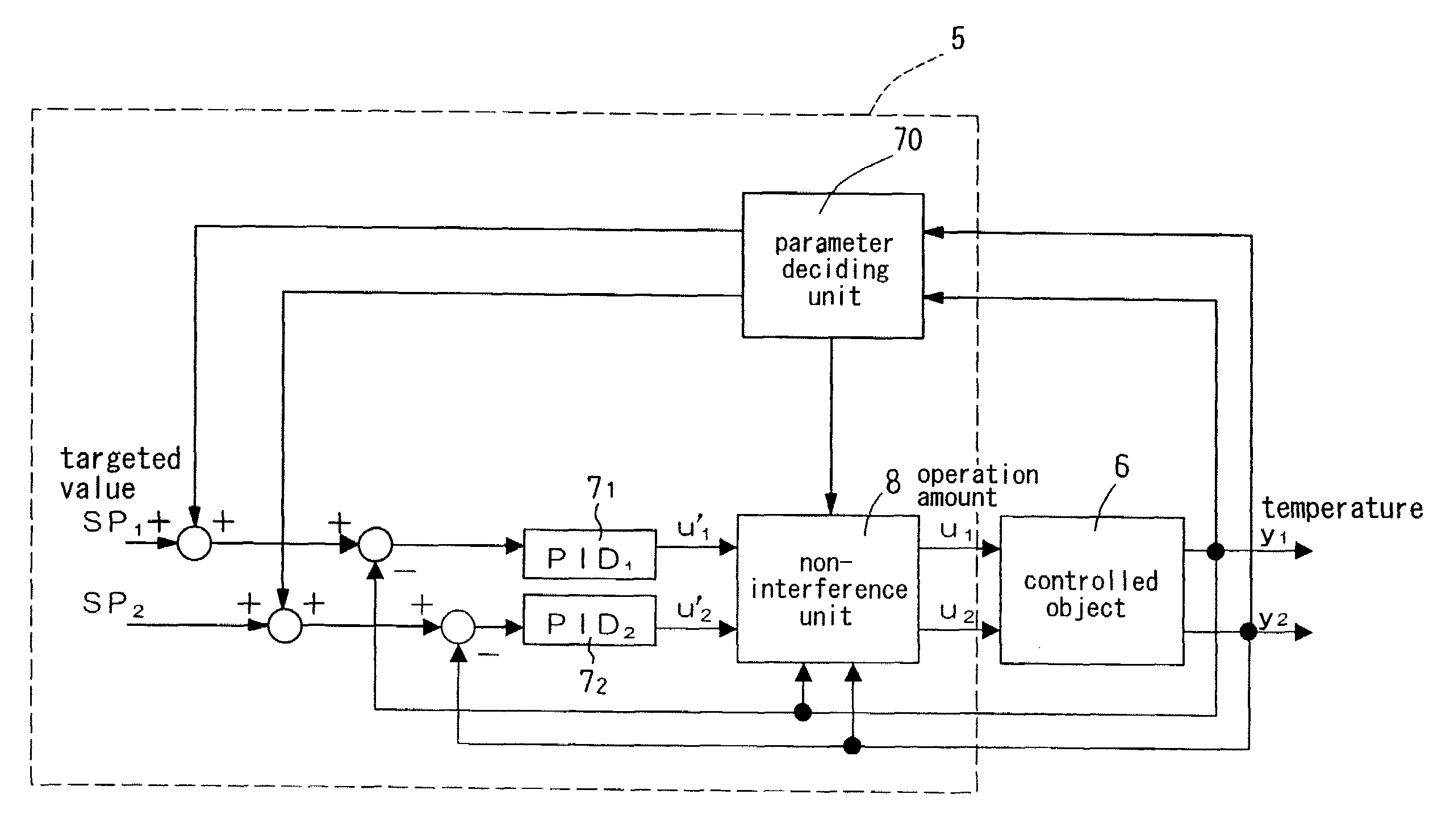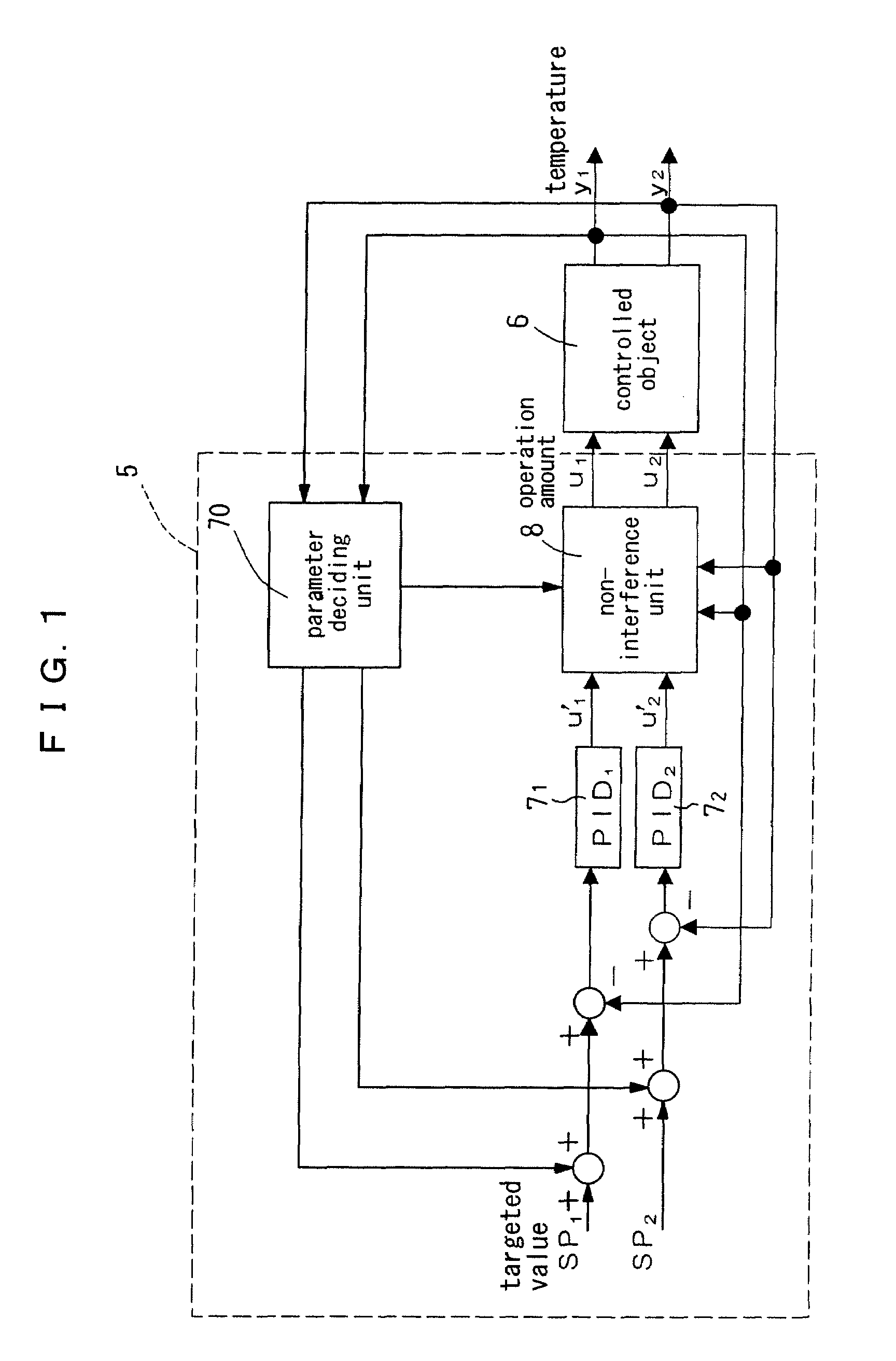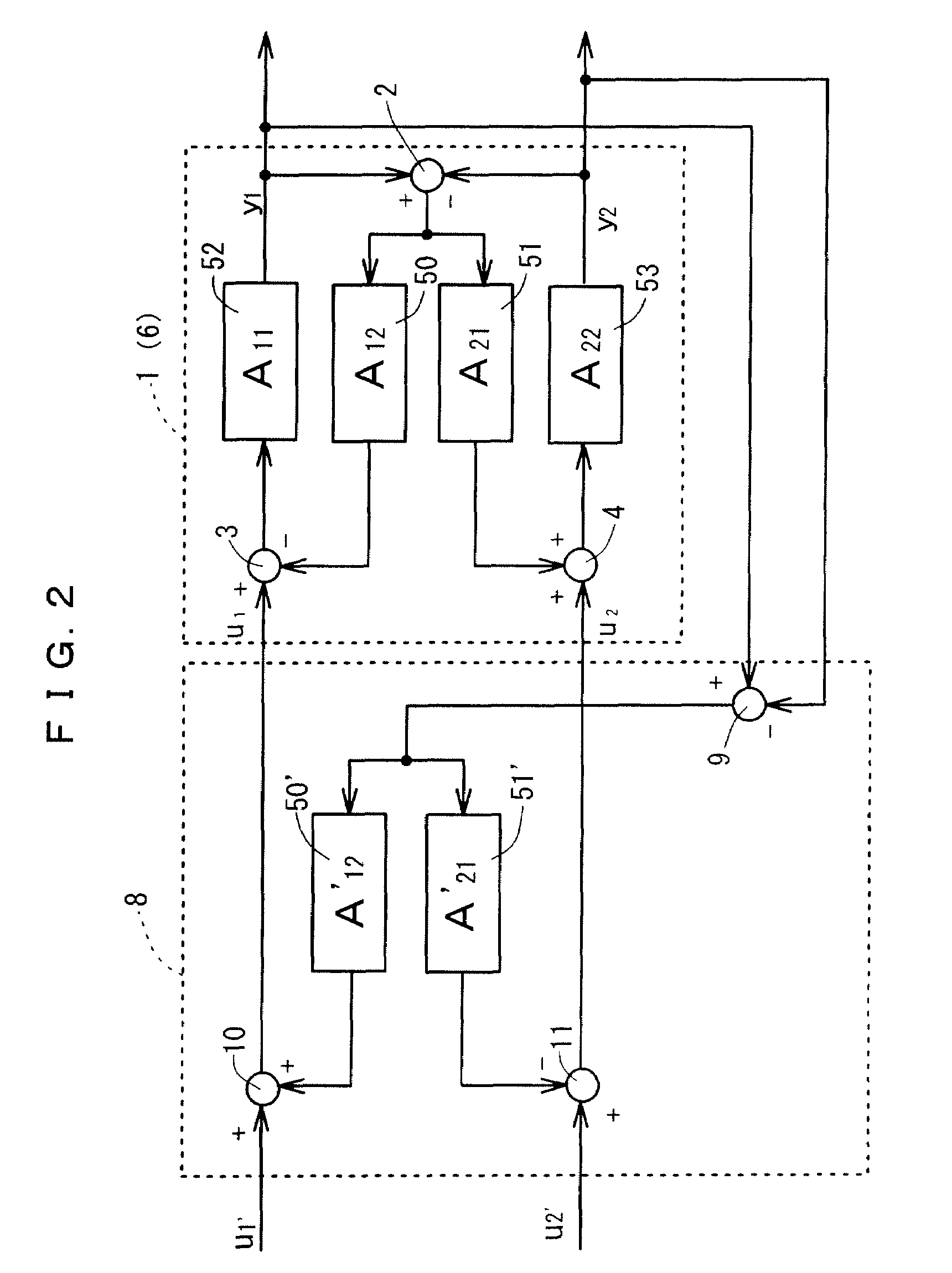Model structure parameter decision method, parameter decision device, control device, and temperature adjustment device
a parameter decision and model structure technology, applied in automatic control, electric controllers, instruments, etc., can solve problems such as temperature difference, inability to achieve ideal non-interference, and low simpleness
- Summary
- Abstract
- Description
- Claims
- Application Information
AI Technical Summary
Benefits of technology
Problems solved by technology
Method used
Image
Examples
embodiment 1
Preferred Embodiment 1
[0130]FIG. 1 shows a schematic constitution of a temperature control system provided with a temperature adjustment device 5 according to the present invention for performing non-interference control.
[0131]The temperature adjustment device 5 according to the present preferred embodiment performs the non-interference using the model structure proposed in the aforementioned Patent Document 1, and a parameter deciding unit 70 for deciding parameters of the model structure is incorporated therein. The parameter deciding unit 70 changes respective targeted temperatures SP1 and SP2 as described below when the parameters are decided.
[0132]The temperature adjustment device 5 comprises two PID control units 71 and 72 for respectively calculating and outputting operation amounts u1′ and u2′ based on differences between two detected temperatures y1 and y2 from a controlled object 6 and respective targeted temperatures SP1 and SP2, a non-interference unit 8 for executing th...
embodiment 2
Preferred Embodiment 2
[0223]The foregoing preferred embodiment was applied to the model structure having the two inputs and the two outputs. Below described is a preferred embodiment 2 of the present invention that is applied to a model structure having N inputs and N outputs (N is a natural number of at least two).
[0224]In the present preferred embodiment, the model structure shown in FIG. 21 is applied to a plurality of channels. As shown in FIG. 4, a plurality (n) of model elements 601-60n are set as the first-order lag system in which steady gains Ki-Kn and time constants T1-Tn are used, and a plurality (n−1) of feedback elements 6112-61(n-1)n are set as the fixed values in which resistances θ12-θ(n-1)n are used. In FIG. 4, P1-Pn denote inputs, and T1-Tn denote outputs.
[0225]Here, first, the parameters are obtained in the steady state in view of the steady-state properties.
[0226]Provided that a transfer functions G(s) of the controlled object of the thermal system is the first-o...
embodiment 3
Preferred Embodiment 3
[0268]In the aforementioned preferred embodiment 2, it is necessary for the user to set the thermal capacity C in order to decide all of the parameters in the model structure 1-1 as in the model prediction control, which is troublesome.
[0269]So, in this preferred embodiment of the present invention, it is unnecessary for the user to set the thermal capacities C1-Cn which regulate the time constants T1-Tn=C1·θ1-Cn·θn of the respective channels in the model structure shown in FIG. 4, the parameters are obtained from a maximum tilt R in the step response waveform of the controlled object 6.
[0270]In the response waveform of the output y of the controlled object shown in FIG. 15(b) to the stepwise input u shown in FIG. 15(a), the maximum tilt R is expressed with the steady gain K and the time constant T in the following expression.
R=K / T
[0271]Here, because the steady gain K can be expressed with the thermal resistance θ as described above, and the time constant T ca...
PUM
 Login to View More
Login to View More Abstract
Description
Claims
Application Information
 Login to View More
Login to View More - R&D
- Intellectual Property
- Life Sciences
- Materials
- Tech Scout
- Unparalleled Data Quality
- Higher Quality Content
- 60% Fewer Hallucinations
Browse by: Latest US Patents, China's latest patents, Technical Efficacy Thesaurus, Application Domain, Technology Topic, Popular Technical Reports.
© 2025 PatSnap. All rights reserved.Legal|Privacy policy|Modern Slavery Act Transparency Statement|Sitemap|About US| Contact US: help@patsnap.com



